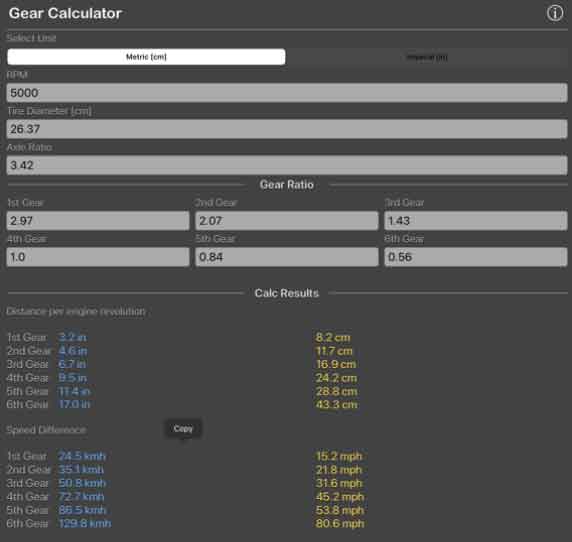The gear calculator is a must-have tool for gear manufacturing and assembly processes. It provides valuable assistance in ensuring accurate and efficient gear production. Here’s why a gear calculator is essential in gear manufacturing and assembly:

- Gear Design Validation: A gear calculator helps validate the design parameters before manufacturing. By inputting the gear specifications, such as tooth profile, module, pressure angle, and number of teeth, the calculator can verify the feasibility and correctness of the design. It ensures that the gear geometry is suitable for the intended application and aligns with manufacturing capabilities.
- Material Optimization: Gear calculators can assist in material selection for gear manufacturing. By considering factors such as the applied load, speed, and operating conditions, the calculator helps determine the appropriate material that offers the required strength, hardness, and wear resistance. This optimization ensures that the gear material is suitable for the specific application, promoting durability and longevity.
- Dimensional Accuracy: Gear calculators aid in achieving dimensional accuracy during the gear manufacturing process. They provide critical information such as pitch diameter, tooth thickness, and center distance, allowing manufacturers to precisely control these dimensions during gear cutting, shaping, or grinding operations. This ensures that the manufactured gears meet the specified requirements and provide proper gear meshing.
- Assembly Alignment: Gear calculators help ensure proper alignment during gear assembly. By calculating the required gear ratios and tooth profiles, the calculator assists in aligning the gears accurately to achieve the desired performance. It helps prevent misalignment issues, such as backlash or improper contact, which can result in noise, vibration, and reduced efficiency.
- Load Distribution Analysis: Gear calculators aid in load distribution analysis, enabling manufacturers to assess how the load is distributed across the gear teeth. This analysis helps identify potential areas of high stress concentration or uneven load sharing. By adjusting gear parameters, manufacturers can optimize load distribution, enhancing gear performance and durability.
- Efficiency and Power Loss Analysis: Gear calculators can estimate the efficiency and power losses within a gear system. By considering factors such as friction, tooth engagement, and lubrication efficiency, the calculator provides insights into power losses and helps manufacturers identify areas where efficiency improvements can be made. This information guides decisions for gear design optimization and lubrication selection.
- Simulation and Prototyping: Some advanced gear calculators offer simulation and prototyping capabilities. Manufacturers can simulate gear behavior, including gear meshing, contact patterns, and load distribution. This allows for virtual testing and evaluation of different design scenarios, enabling manufacturers to identify potential issues and optimize gear performance before physical prototyping.
- Iterative Design Improvement: Gear calculators facilitate an iterative design improvement process. Manufacturers can make adjustments to gear parameters, such as tooth profile, gear dimensions, or material properties, and observe the resulting changes in performance metrics. This iterative approach helps fine-tune gear designs, leading to improved efficiency, reduced noise, and enhanced reliability.
By leveraging the capabilities of a gear calculator, gear manufacturers can streamline the manufacturing and assembly processes, ensure dimensional accuracy, optimize material selection, enhance load distribution, and improve overall gear system performance. The calculator serves as a valuable tool in the gear production workflow, supporting precise gear manufacturing and assembly for a wide range of applications.
